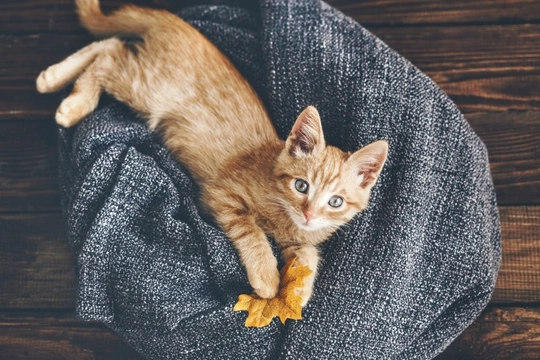
How to Teach the Kids to Play Nicely With a New Kitten
Having decided to get a kitten, you need to make sure the whole family is prepared not only for the responsibility owning a pet, but also for the commitment involved in taking care of them and how to play with the new kitten so that nobody gets hurt or scared. This is particularly true if you have younger kids who may just be a little too boisterous when they are around their new tiny four-legged friend.
There is no doubt at all that kittens love to play and they don't need much of a reason to pounce on anything that moves, even if it only moves a tad! The problem is that kittens are incredibly cute when they start hunting they prey around the home and this includes your toes. The cuteness can soon vanish though, especially when they pounce on a child's toe which ends up scaring them both!
For Kittens Play in Perfectly Normal
For kittens between the ages of 3 to 6 months old, hunting and playing rough is perfectly normal behaviour because they are starting to learn "the ropes". In fact, at this age their lives consist wholly of eating, sleeping and lots of play time. The way kittens play when they are really young is more tentative than anything else, and it's during this early part of their lives that young children need to be taught how to behave when they are around their pets so the situation always stays nice, friendly and fun.
Teaching Children to be Calm
It's important that younger children be taught to be calm when they are around a young kitten and that they are not allowed to pick them up because they might end up hurting their new pet. It's also important for children to understand how a kitten likes to play and that playing too roughly with them is a no-no.
It's far better to invest in some good quality toys and ideally these need to be ones the kids can drag around behind them on the floor so their new pet gets to chase toys around and pounce on them when they are ready. Like this, little fingers are well out of the way and the risk of children being scratched or bitten are greatly reduced!
In fact, you should never let a kitten grab hold of your hands or arms either because this type of play actually sends out the wrong message to them when it comes to who is the "boss". The last thing you want is for your kitten to think of you or the children as just another "toy that squeaks". It's far better to use a dangly toy that's securely fixed to a piece of string so your pet can have fun wrestling with it on the ground and leaping into the air to catch it rather than letting them grab hold of your hand or arm.
Chasing kittens is a real no-no!
Children need to understand the difference between a kitten chasing a toy they are dragging it behind them and them chasing a kitten. You need to get the message across to the kids that chasing a little cat will scare them which is not nice at all. It's easy for younger children to want to turn the game around, so it's important they are taught that when their pet chases a toy it's fine, but it's a real no-no for them to chase their kitten around the home!
Avoiding getting scratched
Kittens are still learning the ropes and it would be fair to say that if they did end up scratching a child, it would be more by mistake than intentional. As such, should an "accident" happen, it's important that you explain things clearly to a child so their new pet doesn't end up scaring them whenever they are near them.
Teaching children that kittens need lots of sleep
It's also important for children to understand that their new pet needs lots of beauty sleep so they can grow up to be strong, adult cats. In short, younger kids must be taught that when their pet is sleeping, they need to leave them alone and not wake them up to play them.
Playtime has to be well supervised - always
You should never leave young children alone with a kitten or any other pet and this includes when it's "playtime". Kittens are very small creatures and it's all too easy for a child to injure or frighten them, albeit it accidentally. As such whenever kitten is awake and the children are around, you need to keep a careful watch on what's going on during playtime.



